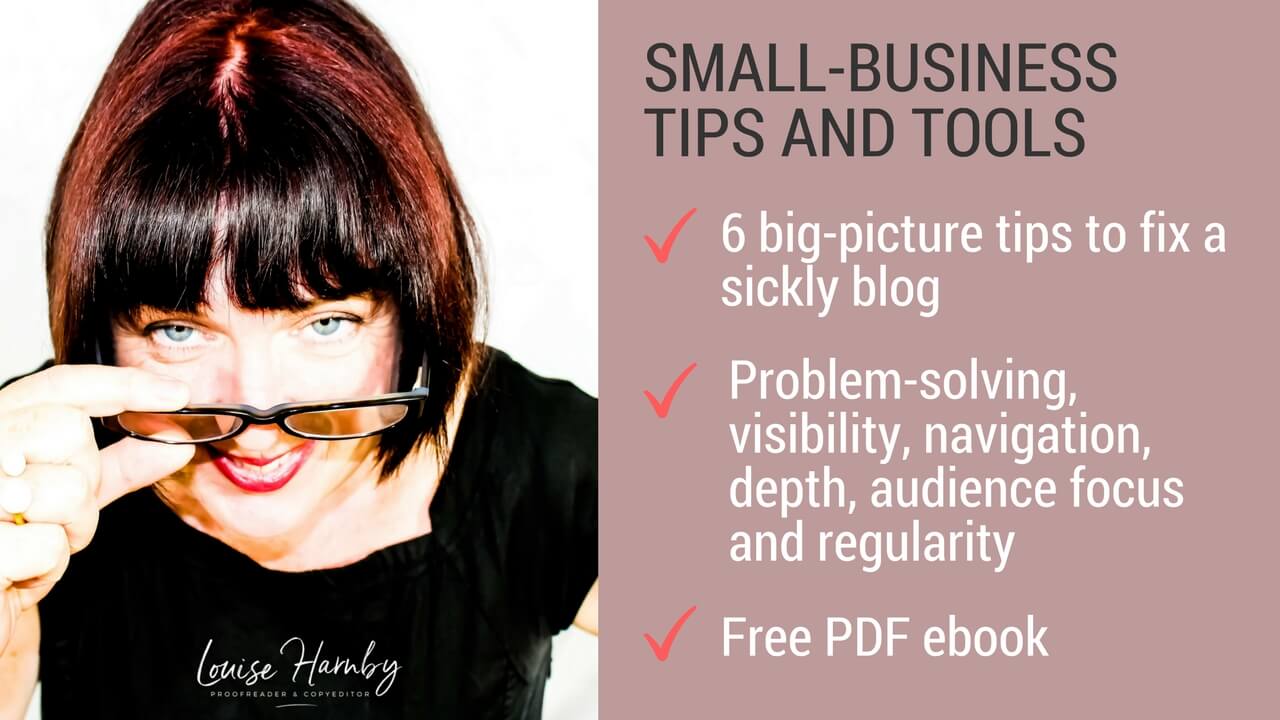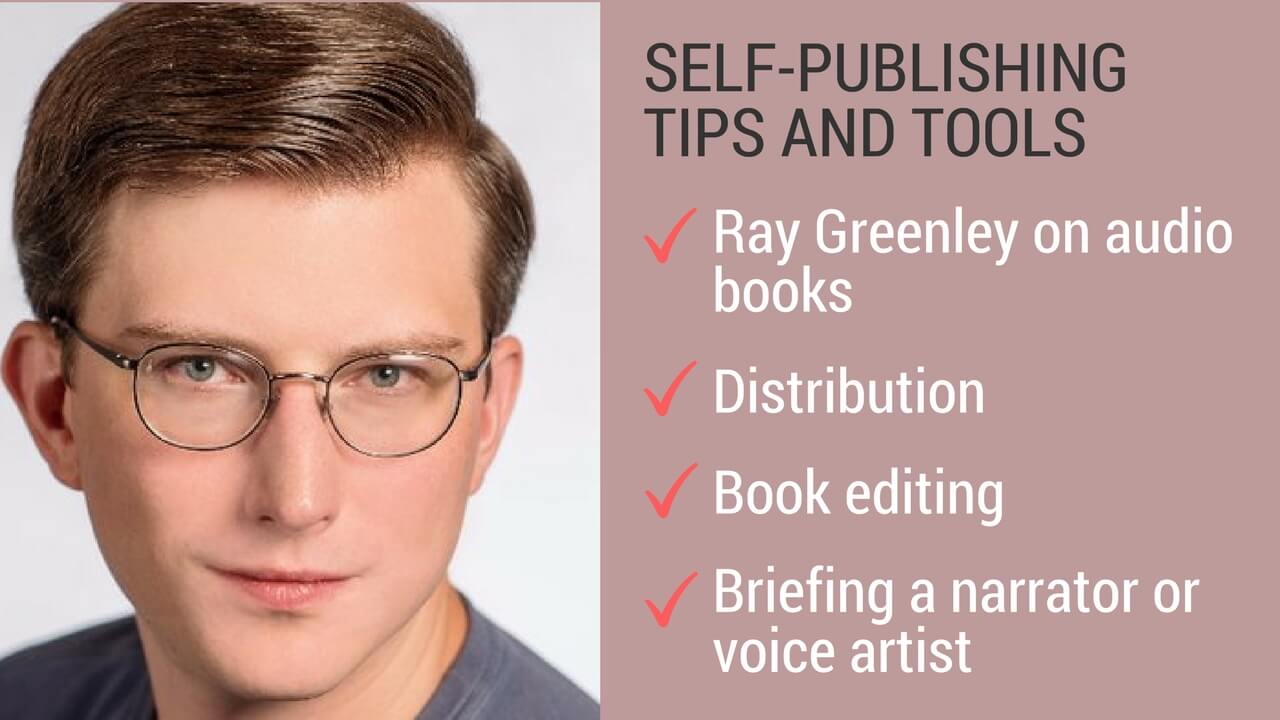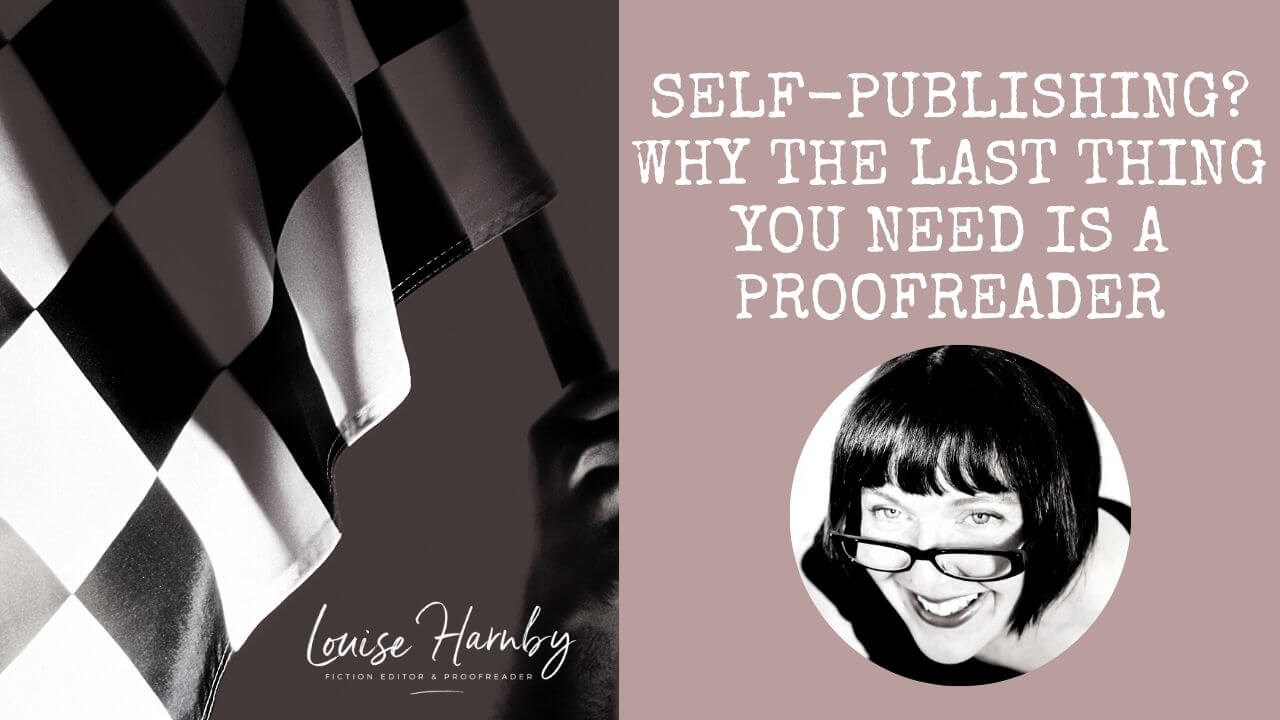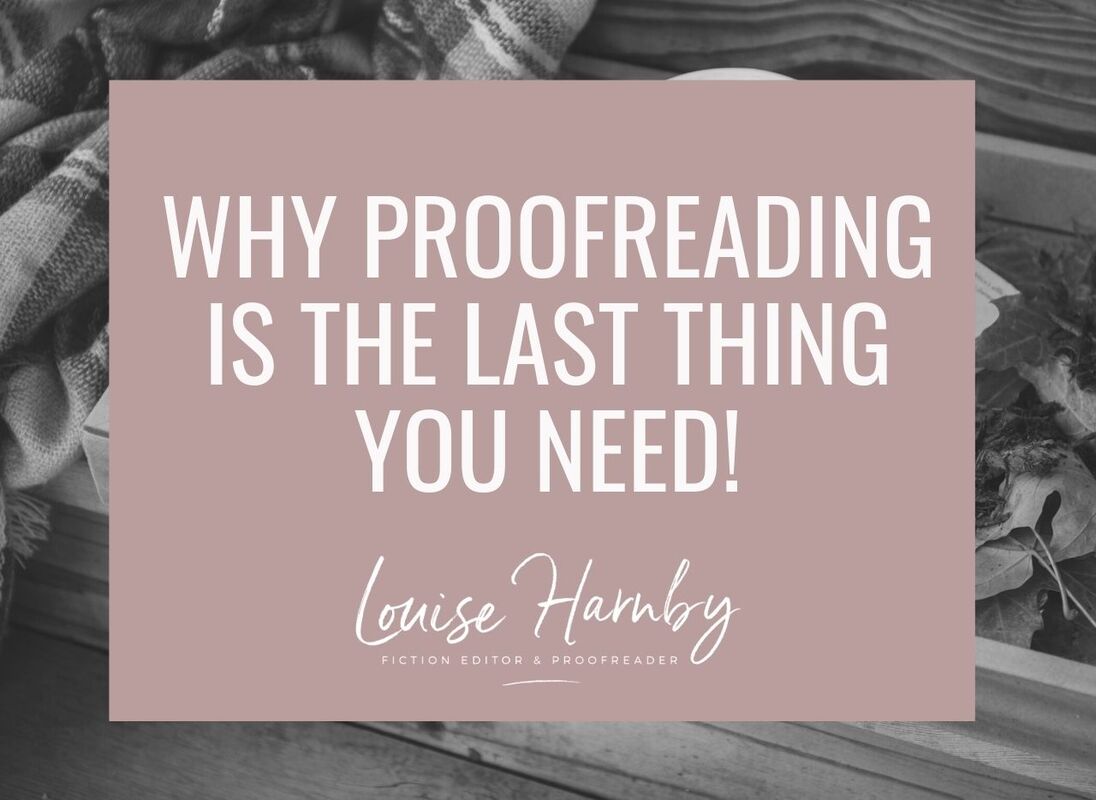|
Some blogs are poorly right from the get-go. If yours is feeling under the weather, here are 6 treatments that will turn it, and your website, into a vibrant resource centre that drives your business forward.
I’ve been blogging since 2011 and my blog is the single biggest driver of traffic to my website – around 36,000 page views per month. Given that 99% all of my clients come to me via Google and two online directories, having a strong web presence is the difference between being booked up six months in advance and being unemployed.
Those visitors end up on my blog for three reasons:
Big-picture focus This article doesn’t focus on the technical minutiae of whether to use Wordpress or Weebly, filling in metadata, writing great headlines, breaking up text with pictures, adding in calls to action, SEO keywords, paragraph length and so on and so forth. That’s not because all the micro stuff isn’t important, but because none of it will amount to anything if the macro issues aren’t in order. Instead, I focus on six big-picture reasons why blogs become poorly, and offer some medicine that will turn them, and the websites hosting them, into vibrant resource centres that drive our businesses forward.
Problem 1: The blog doesn’t solve problems
Some of the blogs I wrote between 2011 and 2015 are a technical disgrace but they worked – and still work – because the content is helpful and shareable. A blog that doesn’t solve problems is a written exercise in self-indulgence and won’t make us the go-to professionals for anything. At best, we’ll be instantly forgettable; at worst, people will talk about us for all the wrong reasons. A colleague recently told me about a piece of video content he’d watched: ‘After 10 minutes I’d lost the will to live. After 20, I’d lost the will for the vlogger to live.’ I trust my colleague, whereas I don’t know or trust that vlogger. Consequently, I didn’t watch the video. There are a ton of online examples of desperate business owners employing attention-seeking methods to get eyes on their content. It can work once, maybe twice. But if we rely on shock, surprise, upset or gaining sympathy with our audience, and no solution, our content-marketing successes will be short-lived. Don’t puke over the reader We all have problems – that doesn’t mean we have to vomit over our audience with our content. Plus, shock and controversy have a short shelf-life. Today’s audiences are easily desensitized and quickly bored, so high-quality problem-solving content will trump the shock factor every time. Nothing should appear on our blogs that doesn’t help the reader move forward in some way. And if we can’t solve a problem, we should hold off, research and rewrite. Only once we have a solution should we publish. When we do solve problems, we make ourselves valuable. People are more likely to talk about, share, like and comment on our blog content. And that has huge SEO benefits over time because the search engines love seeing evidence of a great user experience. Focus on solving the audience’s problems from the get-go and we are well on the way to building a platform that puts us top of mind and discoverable in the search engines.
Problem 2: The blog is published irregularly
Lack of regularity is probably the most common reason for blog failure. We do it for a bit, then run out of ideas, or time, or passion. This is how a reader perceives a blog that publishes content irregularly:
Those feelings don’t inspire trust. If your window cleaner couldn’t be bothered to clean your windows on a regular basis how quickly would you try to find a replacement? It’s the same with blogging. No one’s going to talk about or share our content if we can’t be bothered to create it regularly. Earning the rankings and referrals We have to earn the right to be top of mind for referrals and benefit from our colleagues’ and clients’ SEO-driving activity. And without those likes and shares, Google won’t recognize us as business owners who are actively engaging. That will impact negatively on our rankings. Build a blog plan If you don’t have the time or commitment for blogging, that’s absolutely fine. Don’t do it – focus on making your business visible in other ways. Blogging is just one option. However, if you do want your blog to be your primary content platform, the solution is to build a blog plan beforehand. Here are four initial steps for your plan:
Here are four ideas for how to generate content:
Here are four ideas for how to save time:
Problem 3: The blog is unnavigable
No one searches online for a blog. They search online for solutions. If they click through to our websites, the first place they’ll head for is unlikely to be the blog tab. And even if is, will our visitor find the answer to their problems in the content that’s visible on the first page of the blog? If we only have 10 pieces of content, yes. What if we have 40? How about 500? Second homes The solution is to create second homes for our blog content – libraries, hubs, resource centres ... call them what you will. I have two on my website – a self-publishers page and an editor resources page. There is not one single piece of fresh content on those pages. They’re libraries of titled images that depict what problem I’m solving. However, if you click on the images you’ll end up reading the full articles on the blog. These libraries help my audience find my very best content – the stuff that’s most likely to be talked about, get me known, and make my visitors think I’m helpful and knowledgeable. I only started creating content for one of those libraries in May; it’s already the fourth most popular page on my site ... and that’s because it’s obvious what’s on offer and whom it’s for. Few business bloggers funnel their content through to other pages, and it’s the biggest lost opportunity I can think of. Do this and you will stand out from your competitors for very little additional effort. Here, we’re using our blog content to turn our websites into resource centres rather than all-about-me-and-how-great-I-am sites.
Problem 4: The blog is shallow
My marketing coaches Andrew and Pete preach the art of creating content that makes people fall in love with you. I love this idea because it focuses on emotion – of getting under people’s skin, making them feel something. This sits nicely with the problem-solving principle discussed above. When we solve problems we make people feel something – happy, grateful, relieved, empowered. Emotion born from solutions Just to be clear, those emotions should be evoked as a result of our solving a problem. For example, our funnies alone won’t be enough to make anyone subscribe to and share our content in the long term. No one will waste time reading a funny photographer’s blog if he or she doesn’t solve photography problems too. That’s because if all we want is a laugh, Dara Ó Briain and Rich Hall will do it better. Tone on top of solutions Even if our content is technically good, we have competition. Readers need to hear our voices and our personalities in our posts so that we stand out. I tend to go for warm and friendly. Other tone options might include cheeky, funny, blunt, sweary or ranty. All of that stuff is great but bear in mind that it’s just dressing at the end of the day. It should always hang on a body of solutions. Going deeper with solutions There are already a bajillion blogs with the basics just, about everything. Repeating the same old stuff is boring, and boring blogs are a killer. We need to bring our blog posts alive with case studies (made-up ones if necessary), and stories based on our own experiences, so that our readers have gravy on the meat and two veg. That kind of deeper detail draws people in, makes them feel like we’re really talking to them, not just stuffing our websites with keywords. That is not to say we shouldn’t aim our content at beginners or focus on the basics – far from it. Rather, our content needs to have personality and detail. When we go deep we make an old subject sound fresh because it’s rich with our voices and our experiences.
Problem 5: The blog doesn’t fulfil audience expectations
I don’t visit a dentist’s website expecting to find a treatment for the verruca on my foot. I’m there to sort out my teeth. A blog needs to have a recognizable and understandable raison d’être too. We’re busy and none of us has time to read everything, join every group, watch every vlog, listen to every podcast, do our jobs, and have a life. Blogs that don’t give people a very good reason to be there are doomed. They won’t be bookmarked, subscribed to or shared. If a reader doesn’t understand why they should bother, they’ll quickly lose patience and go elsewhere. There are two reasons why an audience could become confused and disengage: The content is coherent but isn’t aligned with the business creating it. This happens when the blogger has misunderstood the audience’s expectations even though there are myriad specialist solutions that could be offered. The content is incoherent and there are too many audiences. This can happen when a business – usually a product-based one – can’t sustain long-term content creation around the product alone. To compensate, the blogger covers multiple topics for multiple audiences whose problems are already being solved in depth by relevant specialist bloggers elsewhere. Here are two examples where those problems have been solved. Coherent and aligned: The pro presenter There’s plenty one can write about presenting, and that content can be targeted at non-presenters who need to tackle the process, and those who want to run a presentations business. Relevant content might cover the following: dealing with stress, introversion, lack of confidence, speech impediments, organization and planning, which software to use, which venues are best, managing acoustics, scheduling, equipment, payment terms, contract problems, learning resources, apps and plugins to aid preparation, training opportunities, marketing a presentations business, getting published, creating engaging slides, finding and retaining clients, and so on. The presenter is blogging about topics aligned to their core service and targeting an audience with problems related directly to it. The blog is therefore coherent and aligned. Coherent and side-aligned: The condom company There’s only so much one can write about condoms. Durex knows that it will not be able to sustain its audience’s interest in latex and lube, and there are only so many flavours and colours. However, it also knows that its audience is interested in sex, otherwise people wouldn’t need condoms. Durex has created a blog called Love Sex that offers all sorts of tips about perfect massages, advice on STDs, relationships, other forms of contraception, orgasms, positions ... you name it, it’s there. It’s a very clever way of creating content about a related but more interesting issue. If you can’t sustain long-term content creation around your product or service, shift your thinking sideways but make sure it’s focused on your audience’s problems. Durex isn’t blogging about condoms, but it’s still focusing on content that’s related sideways to its core product. Its blog is therefore coherent and side-aligned. Nudging with a name Naming our blogs can help signal purpose. Mine’s called The Proofreader’s Parlour, which should be an indication that my focus is on words. I also publish a lot of content about marketing, but it’s marketing for editors and proofreaders. And I offer content about training, but it’s training for editors and proofreaders. It’s not as interesting as the Durex blog but it solves my clients’ and colleagues’ problems and that’s all that matters!
Problem 6: The blog is invisible
Blogging without blog promotion is a supreme waste of time. It matters little that we’ve nailed all of the above if our blog’s invisible. We could spend hours crafting beautiful content for our target audience, but if we don’t invest the time or effort in making it visible it will have no purposeful business or economic value. Superhero delivery There are numerous ways to promote a blog, and what works for you might not work for me. One thing’s for sure though – social media is the superhero when it comes to content delivery. Three huge platforms – LinkedIn, Twitter and Facebook – offer a superb suite of tools to help us get seen out there. What clear is that it’s about more than just posting links and pretty pictures, now more than ever. Indeed, we have to work increasingly hard on these busy platforms with their ever-shifting algorithms. However, persistence pays and there is no faster way to get your blog content, and your business, in front of people than by embracing social media. Automating to make space for crafting Content should be scheduled regularly because on some platforms, Twitter especially, the feed moves so fast that your blog-post links are more likely to be missed than seen. I post on Twitter ten times a day, seven days a week. Automate your evergreen posts where you can (full automation will shortly not be possible on Twitter via the likes of Recurpost). That will free up time for posting manually on your core platforms. Manual posting allows us to craft our posts with the algorithms in mind. An example: Crafting for Facebook Here are some of the ways in which you might promote your blog content on Facebook:
Six-tip summary
Good luck building a healthy blog! Here's a free ebook. Visit the Blogging page in my resource library to download this free booklet. And if you're ready to dig even deeper, take a look at my course Blogging for Business Growth.
Louise Harnby is a line editor, copyeditor and proofreader who specializes in working with crime, mystery, suspense and thriller writers.
She is an Advanced Professional Member of the Chartered Institute of Editing and Proofreading (CIEP), a member of ACES, a Partner Member of The Alliance of Independent Authors (ALLi), and co-hosts The Editing Podcast. FIND OUT MORE > Get in touch: Louise Harnby | Fiction Editor & Proofreader > Connect: Twitter at @LouiseHarnby, Facebook and LinkedIn > Learn: Books and courses > Discover: Resources for authors and editors
3 Comments
Here's the fourth part of my audio-book creation series. In this article, professional voice artist Ray Greenley discusses distribution options, the importance of having your manuscript edited prior to narration, and briefing your voice artist or producer. Here's Ray ...
Distribution decisions
So you’ve listened to your auditions, you’ve researched your potential producer and think they’re the one for your book, and you’ve come to an agreement on payment terms. There are a few other bits you’ll need to work out before you can offer the producer a contract. One is whether you want to distribute exclusively through Audible, Amazon, and iTunes for a higher share of the royalties from sales (royalties are 40% of sale price), or non-exclusively, which means you can set up distribution yourself through other platforms, but you’ll get a smaller share of royalties from sales through Audible, Amazon, and iTunes (royalties are 25% of sale price). Note that if you want to do a Royalty Share or Hybrid contract on ACX, you MUST do exclusive distribution. There’s some other information you’ll need to work out with the producer:
Different producers work at different paces; and many will have other books already waiting to be recorded. They might be able to start on your book right away and have it done in a week or two, or they might be scheduling out months in advance. Talk to your producer and let them know if you have any schedule in mind, but be ready to be flexible. Once you have those dates, you can offer the contract, and when it’s accepted you’re almost ready to go! There’s just one more thing you need to do, and that’s provide the producer with your final, ready-to-record manuscript.
Editing your manuscript
Now, I promise this isn’t just me sucking up to my gracious host, but please, for the love of all that’s good and holy, make sure your manuscript is edited and proofed by someone who knows what they’re doing. It makes the project many times more difficult when we have to struggle through bad grammar, missing punctuation, and poor formatting. In some cases (as happened with me early on), we can’t do it and the contract has to be canceled. If you find a producer who you like working with and does good work for you, then you’ll want to build that relationship into something ongoing. Handing them a manuscript that they can barely get through isn’t going to help. And while those grammar errors may seem innocuous enough on the page to your eyes, they’re VERY hard to hide in audio. Now, we producers know enough to not expect perfection. We can handle a reasonable number of errors in a manuscript. But in the end, it’s best for you, for us, and for your readers to get your manuscript properly edited, so please do it before sending the manuscript to us.
Briefing your producer
From here on out, it sort of depends on you and the producer. One thing that’s often very handy for a producer is to get some additional information about the characters in the story, including:
Also, if your book has words that your producer might have a hard time finding pronunciations for (particularly with made-up names in science fiction or fantasy books), having a key is really helpful. It’s really important to get this sort of information as early as possible while the producer is preparing to narrate the book, but before they’ve actually hit ‘record’. None of that stuff is vital; if you picked your producer well, they’ll be ready to handle all of that on their own. But having some guidance can definitely help. In the final article, we'll look at evaluating the first 15 minutes and production approval. Until then ... Resources
Contact Ray Greenley Website | Facebook | Twitter
Louise Harnby is a fiction copyeditor and proofreader who specializes in helping self-publishing writers prepare their novels for market.
She is the author of several books on business planning and marketing for editors, and runs online courses from within the Craft Your Editorial Fingerprint series. She is also an Advanced Professional Member of the Society for Editors and Proofreaders. Louise loves books, coffee and craft gin, though not always in that order. Visit her business website at Louise Harnby | Proofreader & Copyeditor, say hello on Twitter at @LouiseHarnby, or connect via Facebook and LinkedIn. If you're an author, take a look at Louise’s Writing Library and access her latest self-publishing resources, all of which are free and available instantly.
If you're thinking about self-publishing a book, there 's something you need to know about prepping your prose before you go public: Proofreading is the last thing you need.
Begin on the starting blocks
When I say proofreading is the last thing you need, I mean it literally. Proofreading is the final stage in the editorial process prior to publication. The self-publisher who moves straight from writing to proofreading is trying to win the race by starting on the finish line. And unless you’re an extraordinary self-editor, you’ll be disappointed because it’s likely your book won’t be ready for market. Retain control but mimic the mainstream The beauty of self-publishing is the control you have over the process – you get to write the book you want on your terms. This means:
Still, the mainstream publishing industry knows a thing or two about producing books, and so they should – they’ve been doing it for long enough. And in their production world, proofreading comes last. This isn’t because it’s less important than the previous stages of editing, or easier, or quicker, but because it’s the final quality-control check to pick up what the interior designer, copy-editor, line editor and even a developmental editor missed – anything from an inconsistent character’s name to a misplaced apostrophe, a missing page number to a misspelled word, a rogue paragraph indent to an incorrectly formatted reference. This staged approach to editorial production, carried out by fresh, specialist sets of eyes, increases the likelihood that when the book hits the shelves – even the digital ones – most of the errors will have been fixed. If you mimic the mainstream publishing industry when you self-publish, you reach for the same bar. The different stages of editing When it comes to the different stages of editing, things are complicated by the fact that there are no universally applied terms used within the publishing industry or by the thousands of independent editors and proofreaders. However, what the industry doesn't disagree on is the order. Here's a framework to help you visualize the process: 1. SHAPING
This is the big-picture work that focuses on stuff like structure, plot, pace, narrative point of view and characterization. Terminology varies but look out for the following: developmental editing, content editing, substantive editing, story editing or structural editing.
2. SMOOTHING
This is sentence-level work that focuses on flow, form, readability and engagement. You might hear it called line editing or stylistic editing.
3. CORRECTING
This is sentence-level work that focuses on correct and consistent spelling, grammar, punctuation and layout. It might include fact-checking, too. It’s usually referred to as copyediting.
4. VERIFYING
This is the quality-control stage that picks up anything missed beforehand. This is where proofreading comes into play. If working on designed page proofs, the proofreader will also be checking that the layout matches the brief.
Be realistic: artistry versus wizardry Some new writers think that hiring a round of proofreading will be enough to make their book ready for market. It comes as a shock, not least to the wallet, when they realize what mimicking the mainstream publishing industry will entail. However, I promise you this – a proofreader will not be able to fix 14,000 spelling, punctuation and grammar errors, strengthen the narrative arc, and omit all the wordiness – all in one pass – and hand the file back to the writer with a guarantee of perfection attached to the invoice.
8 tips for self-publishers on a budget Here are some ideas that will help you make the tough decisions. Click on the image to save and download your own copy of the infographic. Last but not least … the proofreader One pass is not enough. Proofreading is an essential part of the self-publishing process, but it’s only one part. Staged editing isn’t cheap – ask any mainstream press – but it’s the surest way to professional self-publishing that turns discerning readers into fans. And fans won’t just buy this book; they’ll buy every book you’ll ever write. Related reading
Louise Harnby is a line editor, copyeditor and proofreader who specializes in working with crime, mystery, suspense and thriller writers.
She is an Advanced Professional Member of the Chartered Institute of Editing and Proofreading (CIEP), a member of ACES, a Partner Member of The Alliance of Independent Authors (ALLi), and co-hosts The Editing Podcast. Visit her business website at Louise Harnby | Fiction Editor & Proofreader, say hello on Twitter at @LouiseHarnby, connect via Facebook and LinkedIn, and check out her books and courses. |
BLOG ALERTSIf you'd like me to email you when a new blog post is available, sign up for blog alerts!
TESTIMONIALSDare Rogers'Louise uses her expertise to hone a story until it's razor sharp, while still allowing the author’s voice to remain dominant.'Jeff Carson'I wholeheartedly recommend her services ... Just don’t hire her when I need her.'J B Turner'Sincere thanks for a beautiful and elegant piece of work. First class.'Ayshe Gemedzhy'What makes her stand out and shine is her ability to immerse herself in your story.'Salt Publishing'A million thanks – your mark-up is perfect, as always.'CATEGORIES
All
ARCHIVES
July 2024
|
|
|
|






























 RSS Feed
RSS Feed





